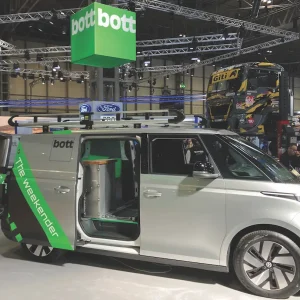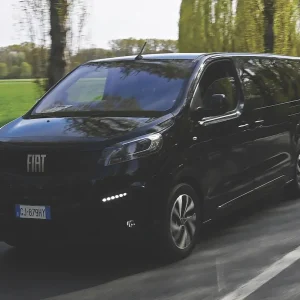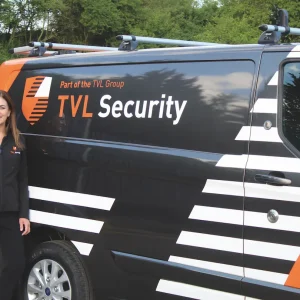Refrigeration specialists have reported a strong uptick in demand for electric van conversions, claiming that orders for electric vehicles with chilled cargo areas have spiked in recent months.
Converters have been working on plug-in vehicles since their inception, but say they have historically accounted for a comparatively small amount of business. Sales have increased as industry-wide factors such as the Worldwide Harmonised Light Vehicle Test Procedure (WLTP) and urban clean-air zones loom large, though.
“Interest [in electric van conversions] has been slow in the past, but we’ve found that in the last six months there’s been a lot of interest; it’s a big, increasing market for us,” says Colin Smith, proprietor and managing director of Vantastec.
“The demand for them is growing and we’ve been doing quite a lot of them,” adds Cameron Javed, sales director at Cool Kit. “We’ve just sent another one down to London today.”
According to Smith, interest has been strongest from large companies and public sector organisations that want to present an environmentally friendly image.
“A lot of businesses now want to tick the green box, and it’s the likes of blue chip businesses, local authorities and supermarkets that are leading the market.”
Although orders have only recently gained serious traction, converters have been fitting refrigeration equipment to electric vans since the earliest and most basic versions appeared on the market.
“The first ones we were dealing with were the Aixam Mega vans, so it was quite a while ago when we first started doing them,” adds Javed. “The first mainstream, light commercial vehicles we did were in 2012.”
The industry is now regularly undertaking commissions to fit cooling facilities to the majority of mass-produced electric vehicles, but it has had to adapt its methods and equipment to deal with battery power.
“We stay away from the vehicle’s power source and integrate our own to run the refrigeration equipment,” says Smith. “We’ve experimented and played with the equipment that is out there to make it work.
“If it’s a normal combustion engine then, like a car’s air-conditioning system, you’d have a compressor bolted to the side of the engine to drive it. It’s exactly the same principle for a refrigerated unit on a normal combustion engine. With an electric vehicle, you’ve got to find your own power source to run the refrigeration equipment.”
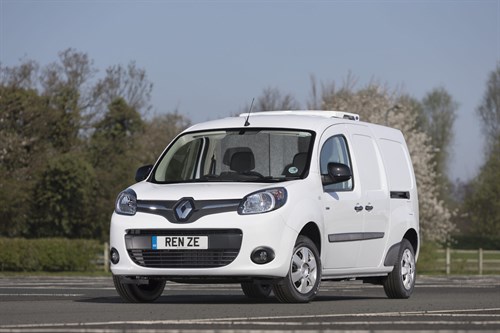
A Renault Kangoo Z.E. fridge van
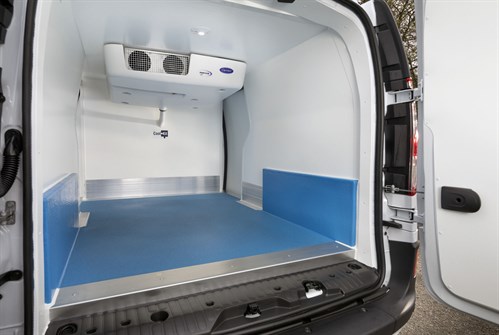
Kitted out for keeping cool
Javed claims it is possible to run a refrigeration system from an electric van’s battery, but it inevitably means a compromise in range, so it’s only recommended for operators with predictable cycles and journeys comfortably within their vehicles’ maximum range.
“There are two options,” he says. “You can work off the vehicle’s battery, which would reduce the range. Some of the figures we’ve seen so far have been around 8.5% to 10% lower ranges by tapping into the battery. If you fit additional batteries to the vehicle [to power the equipment] you then maintain that direct range.
“The majority [of conversions] we have done involve adding additional batteries and not reducing the range, because, going back over the past couple of years, the range of electric vehicles hasn’t been as usable as people would like.”
Advances in battery technology and the greater capability of newer models broaden the options for converters, but installing a separate power source is likely to remain the preferred method for the foreseeable future. Operators investing in such equipment should bear in mind that it needs to be charged independently of the main battery, so charging facilities and times need to be considered.
“It’s a standalone battery which doesn’t connect into any of the existing vehicle electrics at all,” says Javed. “You would have to charge it independently, and when we do electric vehicles, we look at the customer’s operations.
“Depending upon the length of time they need the van to operate, the number of deliveries they are doing and the temperature they need to keep it [the cargo area] at, we’ll specify a refrigeration system which will have the power to work for them.
“And depending on the size of that battery, it could take very different charging times. However, most of these operators are using the vehicle during the day, putting it on charge overnight and coming back in the morning, so they have a full charge.”
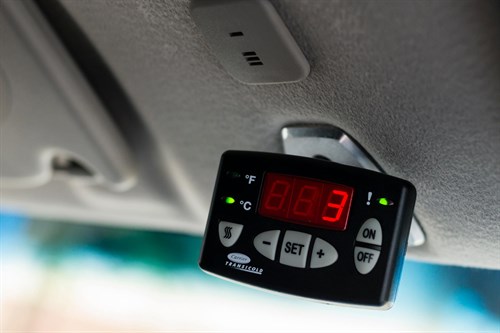
Conversion work extends to the cab

